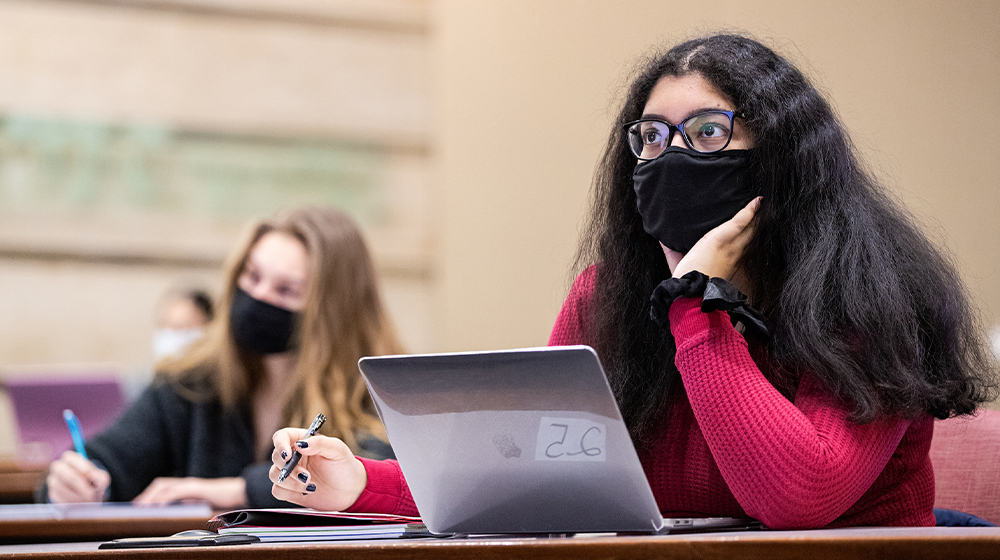Supply Chain Students Apply Classroom Concepts to Real World Challenges

Whether it be learning to tie your shoes, drive a car, or balance a balance sheet, the easiest way to get better at something is often by doing it. Yet in academia, there tends to be a disconnect between students practicing concepts in a classroom vs. applying those concepts in professional settings. Recognizing this gap, Loyola University Chicago and the Quinlan School of Business actively seek opportunities for students to engage with clients across Chicago’s vast business landscape—and there is no better example of it than the graduate supply chain capstone course.
Internally referred to as SCMG 589, Loyola’s graduate supply chain capstone course gives students an opportunity to consult a Fortune 100 company on how to make their value stream mapping more efficient and effective. From technical analysis to soft skills, students must hone in on a variety of different disciplines to achieve the best possible solution.
“They are drinking from a fire hydrant,” says Loyola’s Faculty Lead of Business Consulting and Professor of the course, John Caltagirone. “But my lesson plans and collaboration with the client build on every class. By the tenth week, when we present to the client, the students have both the education and training in their toolbox.”
As value stream mapping know-how and general supply chain acumen continue to grow in demand, access to workforce-ready college students has become an increasingly important asset to the global business community. What better way to solve some of the field’s biggest problems right now than by putting aspiring individuals in a position to explore a number of different perspectives?
“I have my students turn over every stone and present at least one idea that the client had not thought of,” says Caltagirone.
In addition to adding value to businesses, engaged learning courses like SCMG 589 offer serious benefits for students.
“As a student with limited experience in the supply chain field, this course was what allowed me to speak on consulting and project management related to supply chain,” says Robert Ordonez, SCMG 589 alum and current Supply Chain Consultant at Ulta Consultants.
Crossing the bridge from the classroom to the workforce can be a daunting one for students, and one of the best ways to smooth the nerves that come with this transition is by putting oneself in a position to fail, learn, and succeed in this environment.
“To have a multiple month project leading up to a presentation to key company stakeholders is quite a bit of pressure to put on a student,” says Ordonez. “However, preparation and practice became the norm for our team, which ultimately led to a successful presentation and write up. With preparation and practice comes confidence and success, and the capstone project is a perfect example of this.”
Regarding the client — the work speaks for itself.
“The client absolutely valued our team’s analysis,” said Ordonez. “The issue we solved was one they planned to have many analysts from their own company undertake. They understood how difficult some of the information we provided was to come by and were very appreciative of our extensive write up on the topic.”
Just like in the workforce, SCMG 589 places an emphasis on being able to adapt and evolve to constantly changing circumstances.
“In my opinion I am educating the students on what it takes to be an excellent consultant which includes the tools to leverage depending on the situation,” says Caltagirone. “We need to look at options to improve what is being done or not done. In order to do that we need to understand the issue, gather and assess the data, make recommendations, and give reasons for those recommendations. This can be done across any discipline, but as we know, supply chain management is in the news now more than ever.”
To anchor it all together, students in SCMG 589 become well versed in what it takes to be an exemplary co-worker, boss, and friend to people both at their place of employment, and beyond, in the community.
“No matter the course, I always reinforce ethics, social responsibility, DEI, and sustainability,” says Caltagirone. “I want these students to be the future leaders in the U.S. and world.”
Published Dec. 1, 2021
